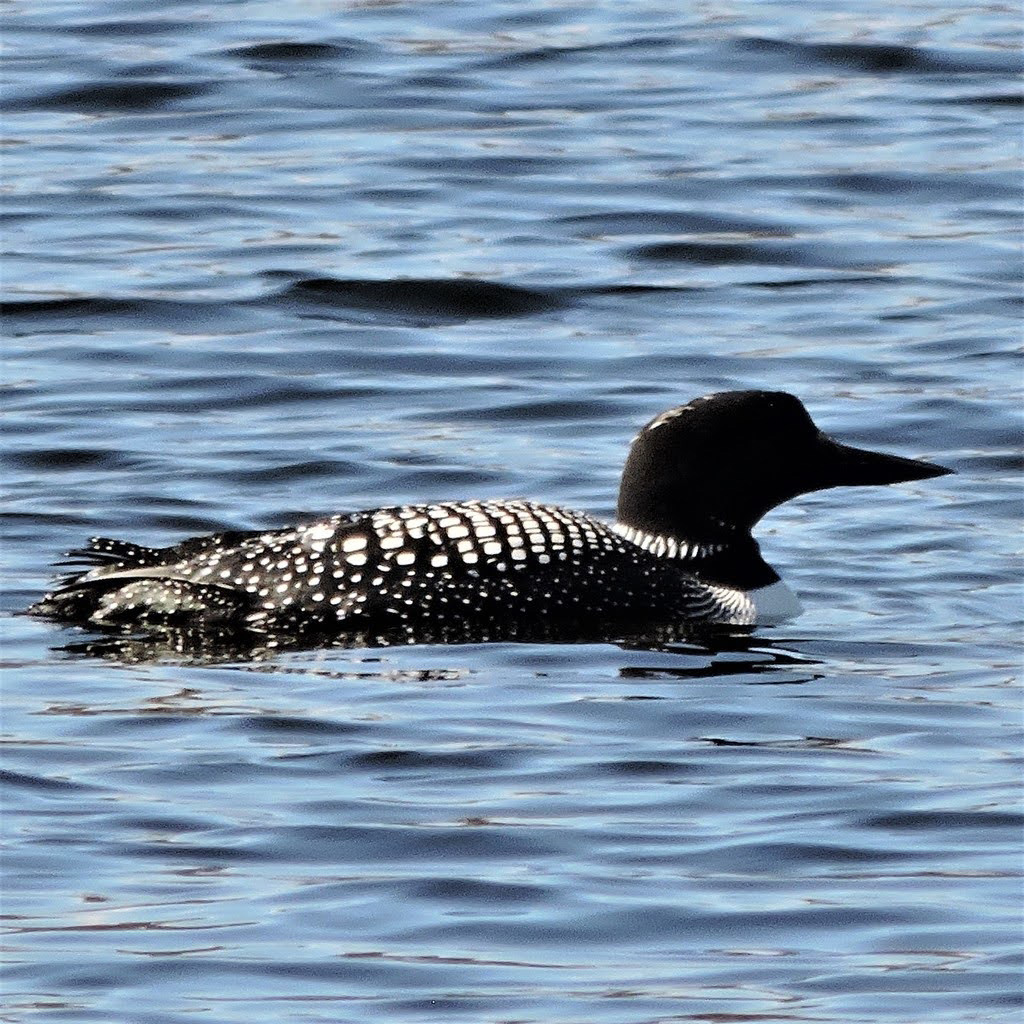With help, common loons are becoming more so, but that doesn’t make their flying less awkward

In colder months – October to March – loons have gray eyes and grayish or brown plumage. (Photo: Richard George)
Maine has about 2,000 breeding pairs of loons, but there are only about 50 breeding pairs in Massachusetts, where the birds were once abundant. In the fall, most loons migrate from their freshwater breeding grounds to their overwintering areas along the coast. Canadian loons fly south along the Eastern Seaboard – some as far as Florida, but some loons in New England remain on their inland breeding ground throughout the winter. If you are lucky, you might see a loon on Fresh Pond.
Loons are awkward on land, and so rarely come ashore except during the breeding season. Loons cannot take off from land because their legs are so far back on their body and because their bones are heavy. (Unlike most other birds, loons have few air-filled spaces in them.) This weight helps them when they dive as deep as 150 feet chasing fish, but it is a hindrance when they want to fly. When loons dive, their heart slows, which allows them to stay underwater for up to 15 minutes – though more commonly up to three minutes.

In spring and summer, loons sport red eyes and plumage with black-and-white spots. (Photo: Betsy Lambert)
In water, loons run along the water and flap their wings for up to a quarter of a mile until they become airborne. Because of the distance needed, loons can sometimes become trapped by ice when there is not enough open water for takeoff. Once in the air, however, loons are fast fliers – up to 75 miles per hour.
Loons were common in Massachusetts until the 1800s – the last known breeding pair of loons was in 1872. In 1975, though, a pair of loons established a breeding territory at the Quabbin Reservoir, and scientists have been working to bring more loons to Massachusetts lakes ever since.

A common loon swims on Fresh Pond in January. (Photo: Heather Ballou)
Loons are unusual in that after young ones fledge, they head out to sea for two years. There they grow into adolescents. In their third year, they return to the lake where they lived as a youngster. To repopulate loons, scientists must capture young loons and bring them to another lake for their first summer. In the fall, the youngsters will head out to sea for two years and, with luck, return to the lake to which they were relocated. This strategy has been successful, and about 40 percent of relocated loons return to the lake they were transferred to – a number similar to the percentage of nonrelocated loons that return to their home lake.

A common loon in West Cambridge in April. (Photo: Ann Schlesinger)
In 2015, 2016 and 2017, for example, scientists relocated 24 loon chicks from Maine and New York to Massachusetts lakes. In 2018, one male (born in New York) returned to Fall River, where he had been released. In 2020, this male mated, and the pair raised their first chick. Altogether nine of the 24 relocated loons returned to Massachusetts. Today, still more loons are being released into Massachusetts lakes with the hope that they will return to breed in the upcoming years.

A loon chick swims in Hopkinton in July. (Photo: Betsy Lambert)
Because of their awkwardness on land, loons usually build a nest close to the water’s edge, where they can approach it from underwater. Loons lay one or two eggs. Only hours after hatching, the young can swim, but spend much of their first two weeks riding their parents’ back. The parents feed the chicks for a couple of months until the youngsters learn to dive well enough to get their own food. After about 12 weeks, the parents migrate to coastal areas for the winter. The juveniles head out to sea for two years.
Loons have four main calls: a sound similar to a howling coyote, a yodel, a hoot and one often referred to as a maniacal laugh.

A common loon in chilly December waters. (Photo: Richard George)
Loon populations have been declining. Common loons are a threatened species in New Hampshire, endangered in Vermont and of special concern in Massachusetts. Loons have been more successful in Canada, where they even appear on the dollar coin, called the loonie, but they are threatened there, too. So bringing loons back to Massachusetts to establish breeding colonies is important work that seems to be succeeding.

A common loon in February 2021. (Photo: Richard George)
Loons prefer to breed in fish-bearing lakes that are at least one-fourth of a mile long (so they have enough water to take off for flight). Due to human development of shorelines, the loon population in Massachusetts will never be able to reach its historic numbers of old, but nonetheless, populations are increasing and we should do what we can to help maintain and encourage these wonderful birds.
From May to early July, you can watch a loon-cam that shows a nest in New Hampshire.
![]()
Reader photo

Mark Flaherty provides this wonderful photo of a flying squirrel.
![]()
Have you taken photos of our urban wild things? Send your images to Cambridge Day, and we may use them as part of a future feature. Include the photographer’s name and the general location where the photo was taken.
Jeanine Farley is an educational writer who has lived in the Boston area for more than 30 years. She enjoys taking photos of our urban wild things.



